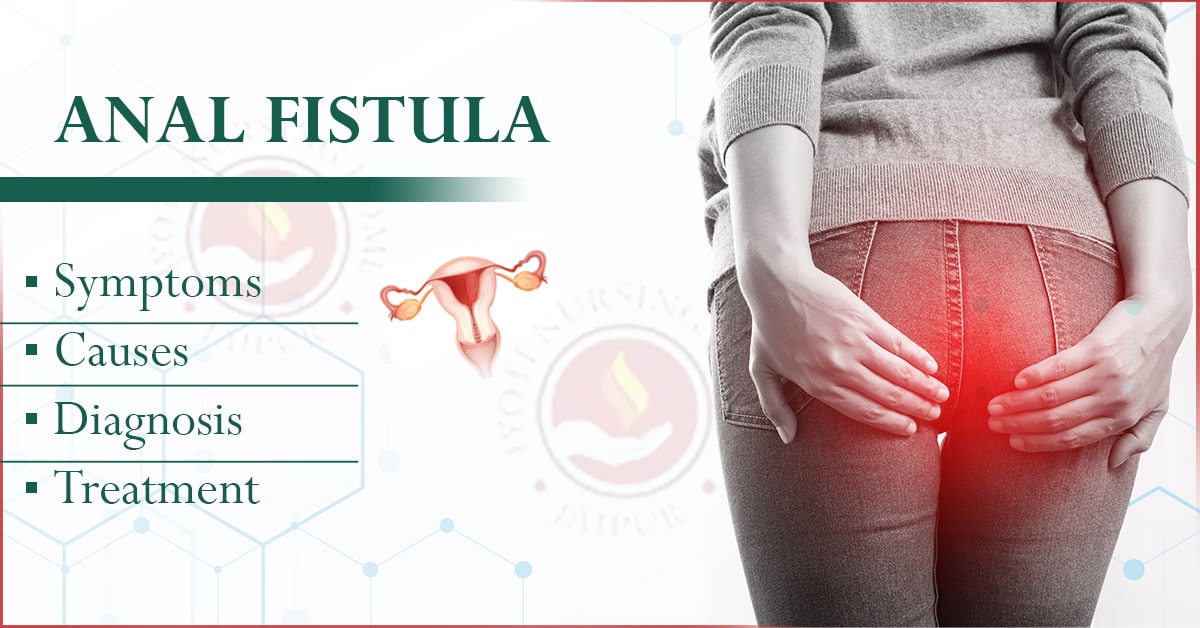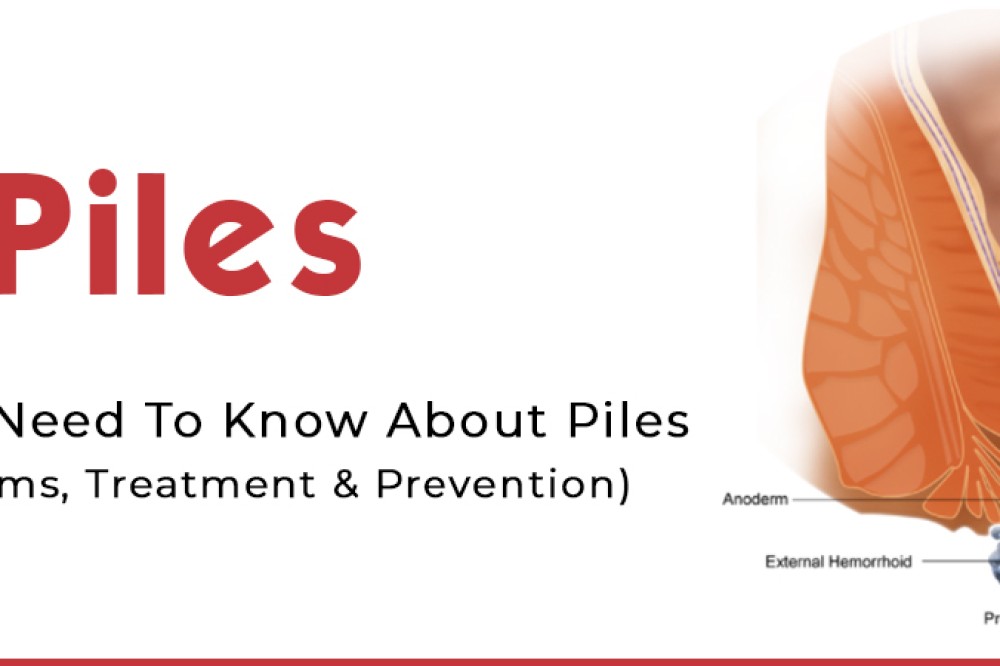
Anal Fistula: Symptoms, Causes, Diagnosis and Treatment
An anal fistula is a small tunnel that forms between the end of the bowel and the skin near the anus, often resulting from an infection in an anal gland. If untreated, it can lead to recurring abscesses and significant discomfort. Understanding the symptoms, causes, and treatment options is crucial for managing this condition effectively.
In this, we will explore the common symptoms of anal fistula, such as pain, swelling, and discharge. We will also delve into its causes, ranging from infections to inflammatory bowel diseases. The diagnostic process, including physical exams and imaging, will be discussed, followed by an overview of various treatment methods, from medications to surgical interventions. Each of these aspects will provide a comprehensive understanding of how to approach and manage anal fistula.
What is an Anal Fistula?
An anal fistula, also known as fistula-in-ano, is an abnormal connection that develops between the inside of the anus or rectum and the skin around the anus. It usually forms as a result of a long-standing infection or abscess in the anal glands, which are located between the muscle layers that control bowel movements. This tunnel creates a passage for fluids like pus or stool to leak out, causing discomfort and drainage. Anal fistulas can be categorized based on how they pass through or around the muscles responsible for controlling the anus, and accurate evaluation is necessary to determine the best treatment approach.
Types of Anal Fistula
Anal fistulas are classified based on their relationship with the anal sphincter muscles and their complexity. The main types of anal fistulas include:
- Intersphincteric Fistula
- The most common type is where the fistula tract passes between the internal and external anal sphincter muscles. It stays within the sphincter muscles and opens near the anus. It often forms from a simple abscess and is usually straightforward to treat.
- Transsphincteric Fistula
- The fistula tract crosses both the internal and external sphincter muscles. Extends from the anal canal through the sphincter muscles to an opening outside the anus. This type may result from deeper abscesses and is more complex to manage due to its involvement in both muscle groups.
- Suprasphincteric Fistula
- The fistula tract starts above the internal sphincter, passes over the external sphincter, and then extends downwards. Arises above the external sphincter and extends to the perianal skin. This type is more difficult to treat surgically, as it involves a larger portion of the sphincter complex.
- Extrasphincteric Fistula
- The least common type is where the fistula tract bypasses the anal sphincter muscles entirely. Originates from the rectum or pelvic region and extends to the skin, bypassing the sphincter muscles. Often associated with other conditions such as trauma, Crohn’s disease, or surgical complications, and typically requires more extensive treatment.
- Superficial Fistula
- A less severe form where the fistula tract does not involve the sphincter muscles. Located close to the skin's surface, with a short, direct tract. This type is easier to treat as it doesn't affect the sphincter muscles.
Causes of an Anal Fistula
The primary cause of an anal fistula is an infection in the anal glands, which leads to the formation of an abscess. If the abscess doesn't heal properly, it may leave behind a tunnel or fistula between the inside of the anus and the skin. However, various other factors and conditions can lead to the development of an anal fistula:
- Anal Abscesses
- The majority of anal fistulas develop from untreated or recurrent abscesses. When an abscess forms in the anal region and is not completely drained, it can create a channel between the anus and the skin, leading to a fistula.
- Crohn’s Disease
- A chronic inflammatory bowel disease (IBD), Crohn’s disease increases the risk of fistulas, especially in the anorectal area. The inflammation can extend deep into the bowel wall, promoting abscess formation and fistula development.
- Diverticulitis
- Diverticulitis, an infection or inflammation of small pouches in the intestinal wall, can sometimes lead to the formation of an anal fistula, especially when the infection spreads.
- Trauma
- Physical trauma to the anorectal region, such as injuries or surgeries, may cause tissue damage and infections that increase the risk of developing an anal fistula.
- Tuberculosis (TB)
- Though rare, TB can cause fistulas to form in the anal region when the infection affects the gastrointestinal tract.
- Radiation Therapy
- Patients who have undergone radiation treatment for cancers in the pelvic or anal regions may develop fistulas due to tissue damage caused by the radiation exposure.
- Sexually Transmitted Infections (STIs)
- Certain STIs, particularly those that cause ulcerations or infections in the anal region, such as syphilis or HIV, may increase the risk of abscess formation and subsequent fistula development.
- Hidradenitis Suppurativa
- A chronic skin condition involving blocked hair follicles and infection can affect the perianal region, leading to abscesses and the formation of fistulas.
- Cancer
- In some cases, anal or rectal cancers can result in the formation of a fistula as the tumor invades nearby tissues or as a complication of surgical treatments for cancer.
Anal fistula’s symptoms
The symptoms of an anal fistula vary depending on the size and complexity of the fistula, but they commonly involve discomfort and drainage around the anal area. Below are the typical signs and symptoms associated with anal fistulas:
- Persistent or Recurrent Pain: Pain around the anus is a common symptom, particularly when sitting, moving, or having a bowel movement. The pain may be constant or come and go.
- Swelling and Tenderness: There may be noticeable swelling around the anus, which can feel tender or sensitive to touch, particularly when pressure is applied.
- Discharge of Pus or Blood: A significant symptom of an anal fistula is the discharge of pus or blood from the opening near the anus. This discharge may be foul-smelling and is often a sign that the fistula is draining infected material.
- Irritation of the Skin: Continuous leakage of pus or fluids from the fistula opening can irritate the surrounding skin, causing redness, itching, or even skin breakdown (dermatitis).
- Fever and Fatigue: In cases where an infection is present or an abscess has developed, patients may experience systemic symptoms like fever, chills, and fatigue.
- Recurrent Abscesses: Individuals with an anal fistula often develop recurring anal abscesses, which are collections of pus in the tissue around the anus. Abscesses can cause swelling, heat, and severe pain until they are drained.
- Painful Bowel Movements: Fistulas can make passing stools painful. The irritation of the surrounding tissues may cause discomfort or sharp pain during or after a bowel movement.
- Foul Odor: The persistent drainage of pus or stool through the fistula opening can produce a strong, unpleasant odor, particularly if the fistula becomes infected.
- Visible Opening Near the Anus: In some cases, a small external opening or hole near the anus may be visible, which is the outer end of the fistula tract.
How is an Anal Fistula Diagnosed
The diagnosis of an anal fistula involves a combination of a patient's medical history, physical examination, and specialized diagnostic tests to determine the location, size, and complexity of the fistula. Here's how an anal fistula is typically diagnosed:
Medical History and Symptom Discussion: The doctor will begin by reviewing the patient's symptoms, including pain, discharge, and any history of abscesses or previous surgeries. They may also ask about underlying conditions like Crohn’s disease or recent infections that could be contributing factors.
- Physical Examination: A thorough physical exam is usually performed, focusing on the perianal area. The doctor will look for visible signs of a fistula, such as an external opening near the anus, swelling, or pus drainage. They may gently press on the area to identify tender spots or the presence of an abscess.
- Digital Rectal Examination (DRE): In this procedure, the doctor inserts a gloved, lubricated finger into the rectum to feel for any abnormalities such as internal fistula openings, areas of swelling, or hard masses that may indicate the presence of a fistula or an abscess.
- Proctoscopy or Anoscopy: A small tube with a light, called a proctoscope or anoscope, is inserted into the anus and rectum to allow the doctor to visualize the internal portion of the anal canal and rectum. This helps in identifying any internal fistula openings, inflammation, or associated conditions like hemorrhoids.
- Fistulography (X-ray): Fistulography is an imaging test that involves injecting a contrast dye into the fistula tract, followed by X-rays to outline the pathway of the fistula. Though less commonly used today, it can help in identifying the extent and complexity of the fistula, especially when the tract is not easily visible during physical examination.
- Magnetic Resonance Imaging (MRI): MRI is the most sensitive and accurate imaging technique for diagnosing complex fistulas. It provides detailed images of the fistula tract and its relationship to surrounding muscles, helping surgeons plan for treatment. MRI is particularly useful for identifying deep or branching fistulas.
- Endoanal Ultrasound: Endoanal ultrasound uses sound waves to produce images of the anal sphincter muscles and surrounding tissue. A small ultrasound probe is inserted into the anus to help visualize the fistula and its location relative to the sphincter muscles. This test helps plan surgical treatment.
Risk factors for anal fistula
Several factors can increase the risk of developing an anal fistula, primarily linked to infections and underlying health issues. Here are the key risk factors:
- Chronic Anal Abscesses: Untreated or recurrent anal abscesses can lead to inflammation and infection in the anal glands, resulting in fistula formation.
- Crohn's Disease: This inflammatory bowel disease (IBD) significantly raises the risk, as chronic inflammation can lead to fistulas, especially in the anorectal region.
- Ulcerative Colitis: While less commonly associated with fistulas than Crohn's disease, prolonged inflammation from this IBD can still pose a risk.
- History of Trauma or Surgery: Previous trauma or surgeries involving the anorectal area can create scar tissue or infections, increasing the likelihood of fistula formation.
- Radiation Therapy: Patients receiving radiation for pelvic or anorectal cancers may experience tissue damage, elevating the risk of infection and fistula development.
- Infections: Sexually transmitted infections (STIs) like HIV, syphilis, and gonorrhea can cause inflammation and ulceration in the anal region, contributing to fistula formation.
- Hidradenitis Suppurativa: This chronic skin condition can lead to painful lumps and abscesses in the perianal area, increasing the risk of fistulas.
- Tuberculosis (TB): Although rare in some regions, TB can infect the gastrointestinal tract and lead to anal fistula formation, particularly in areas where TB is prevalent.
What is the treatment for an anal fistula?
The specific treatment approach depends on the complexity of the fistula, its location, and the patient’s overall health. Here are the common treatment methods for anal fistula:
- Fistulotomy
- A fistulotomy is the most common surgical procedure for treating a simple fistula. The surgeon cuts open the entire length of the fistula tract to allow it to heal as a flat scar.
- Highly effective for superficial and simple fistulas.
- This procedure can affect the sphincter muscles, so it is only suitable for fistulas that do not involve a significant portion of these muscles to avoid incontinence.
- Seton Placement
- A seton is a surgical thread placed through the fistula tract. It helps to drain infection while allowing the fistula to slowly heal. The seton may be left in place for weeks or months.
- Commonly used for complex or high fistulas, especially when there is a risk of damaging the sphincter muscles.
- Variations:
- Loose Seton: Helps with drainage and healing without cutting through tissue.
- Tight Seton: Gradually cuts through the sphincter muscle while healing the fistula, used in cases where cutting the muscle is necessary.
- Advancement Flap Procedure
- In this procedure, the internal opening of the fistula is covered with a flap of healthy tissue taken from the rectum. The surgeon closes the internal opening of the fistula, allowing it to heal.
- Often used for complex fistulas or when sphincter preservation is critical.
- Requires skilled surgical technique, and there is a risk of recurrence.
- Fibrin Glue
- Fibrin glue is a non-surgical treatment where a special glue is injected into the fistula tract to seal it, encouraging healing from within.
- Minimally invasive and preserves the sphincter muscles, but success rates are lower compared to surgery, and fistulas may recur.
- There is a chance of the glue not sealing the fistula properly, leading to recurrence.
- Ligation of the intersphincteric Fistula Tract (LIFT)
- The LIFT procedure involves accessing the fistula between the sphincter muscles, tying off the internal opening, and then removing the infected tract.
- Used for fistulas that pass through the sphincter muscles. It has a success rate and reduces the risk of incontinence by avoiding sphincter damage.
- Some risk of recurrence, but the procedure has a lower risk of incontinence.
- Bioprosthetic Plug
- This treatment involves inserting a plug made from biologically derived material (such as collagen) into the fistula tract. The plug blocks the fistula and helps the surrounding tissue heal.
- Minimally invasive with sphincter-preserving benefits, but variable success rates.
- Recurrence is possible, and the plug may not always integrate well with the tissue.
- Endorectal Advancement Flap
- The surgeon creates a flap from rectal tissue and uses it to cover the internal fistula opening. This method is typically reserved for more complex fistulas or when other methods have failed.
- Success rates, especially for complex or high fistulas.
- Risk of infection or flap failure, leading to recurrence.
- Fistula Laser Closure (FiLaC)
- This is a relatively new procedure in which a laser fiber is inserted into the fistula tract to obliterate it from the inside, causing the fistula to close.
- Minimally invasive with promising results for simple fistulas, although more research is needed.
- Limited long-term data and success rates may vary based on fistula complexity.
Conclusion
In conclusion, anal fistulas are complex conditions that require careful diagnosis and treatment to prevent complications and recurrence. For those seeking expert care, Jyoti Nursing Home stands out as a premier provider, offering specialized treatment under its Colorectal Surgery Department. Their experienced team is dedicated to delivering effective solutions tailored to each patient's needs, ensuring optimal recovery and quality of life.







